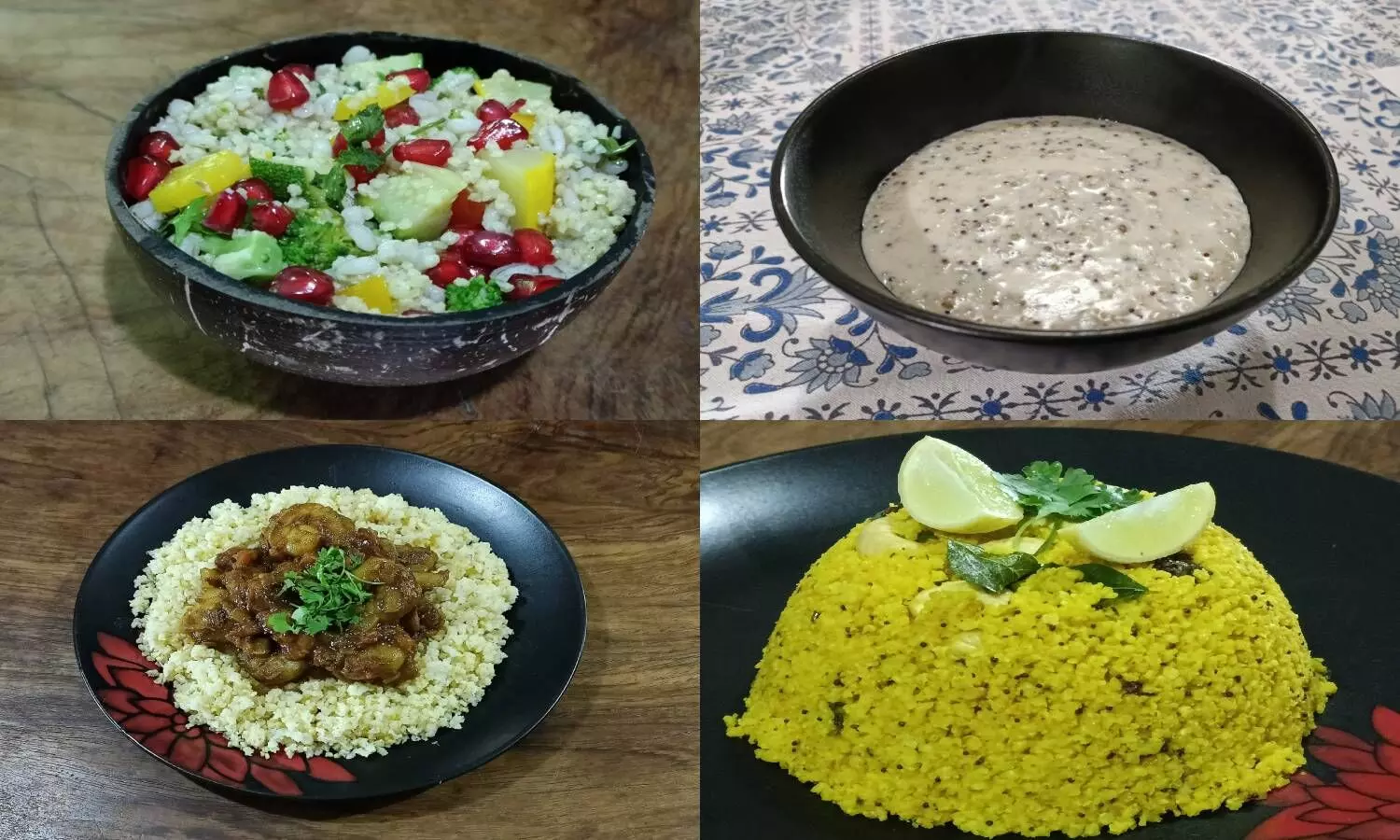Eat millets, reduce diabetes: New study
A new study has revealed that eating millets reduces the risk of type 2 diabetes and helps manage blood glucose levels in diabetics.
By Newsmeter Network
Hyderabad: A new study has revealed that eating millets reduces the risk of type 2 diabetes and helps manage blood glucose levels in diabetics.
Conducted by International Crops Research Institute for the Semi-Arid Tropics (ICRISAT), the study was published in Frontiers in Nutrition.
The study has revealed that diabetic people who consumed millets as part of their daily diet saw their blood glucose levels drop 12-15% (fasting and post-meal), and blood glucose levels went from diabetic to pre-diabetes levels.
The HbA1c (blood glucose bound to hemoglobin) levels lowered on average 17% for pre-diabetic individuals, and the levels went from prediabetic to normal status. These findings affirm that eating millets can lead to a better glycemic response.
The authors reviewed 80 published studies of which 65 were eligible for a meta-analysis involving about 1,000 human subjects, making this analysis the largest systematic review on the topic to date.
"No one knew there were so many scientific studies undertaken on millets' effect on diabetes. These benefits were often contested, and this systematic review of the studies published in scientific journals has proven that millets keep blood glucose levels in check, reducing the risk of diabetes, and has shown just how well these smart foods do it," said Dr. S Anitha, the study's lead author, and a Senior Nutrition Scientist at ICRISAT.
Dr. Hemalatha, Director, National Institute of Nutrition (NIN) said: "Diabetes contributed to very high disease burden from 1990-2016 in India. Diabetes-related health expenditure was over USD 7 million. There is no easy solution, and it requires a lifestyle change, and diet is a very important part of this. This study provides one part of the solution useful for individuals and governments. How we use this and implement it into programs needs careful planning."
Dr. Raj Bhandari, one of the study's authors and a representative on the Indian National Technical Board of Nutrition said additional attention to our health has been accelerated due to COVID-19 and diabetics are even more vulnerable to the virus. "Our diets play a critical role and if we could bring millets back as a major part of our diet, we would not only help in controlling diabetes, but we would also be adding important nutrients to our plate," he said.
According to the International Diabetes Association, diabetes is increasing in all regions of the world. India, China, and the USA have the highest numbers of people with diabetes. Africa has the largest forecasted increase of 143% from 2019 to 2045, the Middle East and North Africa 96% and South East Asia 74%. The authors urge the diversification of staples with millets to keep diabetes in check, especially across Asia and Africa.
Strengthening the case for returning millets as staples, the study found that millets have a low average glycemic index (GI) of 52.7, about 30% lower glycemic index (GI) than milled rice and refined wheat, and about 14-37 GI points lower compared to maize. All 11 types of millets studied were either low (<55) or medium GI (55-69), GI being an indicator of how much and how soon a food increases blood sugar level. The review concluded that even after boiling, baking, and steaming (the most common way of cooking grains) millets had a lower GI than rice, wheat, and maize.
"Now we have strong proof that diversifying our diets with millets can help in prevention and management of diabetes and its complications. India urgently needs solutions to reverse the dangerous growing trend of diabetes and millets is one of the solutions we should be promoting," said Dr. Ananthan Rajendran, one of the co-authors of the study and scientist at the National Institute of Nutrition (NIN),
Dr. Devraj J. Parasannanavar, scientist at the National Institute of Nutrition (NIN) said the study has also identified the information gaps and it would be of great value to have an international collaborative approach to systematically study all types of millets.
"Millets are traditional foods consumed in India. Use of locally available millets as dietary diversification coupled with good lifestyle modifications would help reduce not only Type II diabetes but also gestational diabetes," said Professor Kowsalya Subramaniam, co-author of the study.
Dr. Jacqueline Hughes, Director General ICRISAT, said the global health crisis of undernutrition and over-nutrition coexisting is a sign that our food systems need fixing.
"Greater diversity both on-farm and on-plate is the key to transforming food systems. On-farm diversity is a risk-mitigating strategy for farmers in the face of climate change while on-plate diversity helps counter lifestyle diseases such as diabetes. Millets are part of the solution to mitigate the challenges associated with malnutrition, human health, natural resource degradation, and climate change. Trans-disciplinary research involving multiple stakeholders is required to create resilient, sustainable, and nutritious food systems," he said.
Joanna Kane-Potaka, a co-author from ICRISAT and Executive Director of the Smart Food initiative said the study is the first in a series that will be progressively released in 2021.
"Included are systematic reviews with meta-analyses of the impacts of millets on diabetes, anemia and iron requirements, cholesterol and cardiovascular diseases and calcium deficiencies as well as a review on zinc levels. As part of this, ICRISAT and the Institute for Food Nutrition and Health at the University of Reading have formed a strategic partnership to research and promote the Smart Food vision of making our diets healthier, more sustainable on the environment and good for those who produce it," Joanna said.